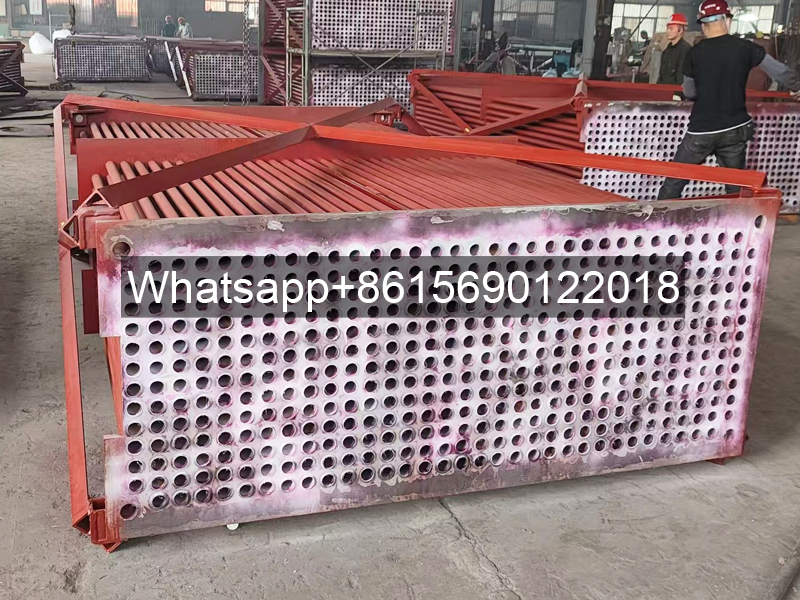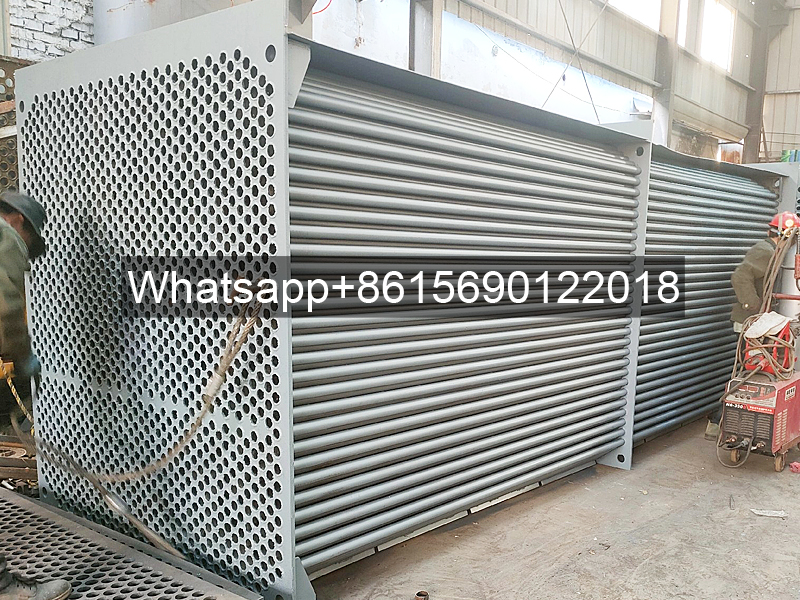China OEM Factory Air Preheater Manufacturer and Supplier
Air preheater is a preheating device that improves the heat exchange performance of the boiler and reduces heat loss. The function of the air preheater is to transfer the heat carried by the flue gas discharged from the tail flue of the boiler to the air before entering the boiler through the heat sink, and preheat the air to a certain temperature.
It is generally referred to as air preheater. It is mostly used in coal-fired power station boilers. It can be divided into two types: tube box type and rotary type. The rotary type is further divided into wind hood rotary type and heating surface rotary type. Power station boilers often use heating surface rotary preheaters. The application in the boiler is generally two-compartment, three-compartment, and four-compartment types, among which the four-compartment is more commonly used in circulating fluidized bed boilers.
Air Preheater By Heat Transfer Method
Working principle of air preheater
Take the rotary air preheater as an example to explain the principle of air preheater. It will rotate slowly during operation. The flue gas will enter the flue gas side of the air preheater and then be discharged. The heat carried by the flue gas will be absorbed by the heat sink in the air preheater. After that, the air preheater rotates slowly, and the heat sink moves to the air side, and then transfers the heat to the air before entering the boiler.
The application of air preheater in boilers is mostly three-compartment type, with fire alarm system, gap adjustment system and frequency conversion control system. The air preheater is easy to use, simple to operate, safe to operate, and can improve the heat exchange performance of the boiler system. Therefore, it is widely used in flue gas boiler systems.
Classification of air preheater
According to the heat transfer method of the air preheater, the air preheater can be divided into two categories: heat conduction type and regeneration type. The most commonly used in the heat conduction air preheater is the tubular air preheater. With the improvement of boiler parameters and the increase of capacity, the heating surface of the tubular air preheater is also increased, which brings difficulties to the layout of the tail heating surface. Therefore, most large-capacity units use compact and lightweight rotary air preheaters. Air preheaters are generally divided into three types: plate type, rotary type and tube type.
Plate type-Air preheater
This type of air preheater is mostly made of 1.5-4mm thin steel plates. The steel plates are welded into rectangular boxes, and several boxes are assembled into a group. The entire air preheater consists of 2-4 boxes. The flue gas passes from top to bottom, passing through the outside of the box, and the air passes horizontally through the inside of the box, turning upward at the bottom, and interacting with the flue gas twice to transfer energy, so that the flue gas and air form a reverse flow, and obtain better heat transfer efficiency.
Plate type air preheaters consume more steel and have a non-compact structure; there are many welds and they are prone to leakage, so they are rarely used now.
Tubular type-Air preheater
The main heat transfer component of the tubular air preheater is a thin-walled steel pipe. Tubular air preheaters are mostly cubic, with steel pipes arranged vertically and staggered with each other, and both ends welded to the upper and lower tube plates. The tubular air preheater is equipped with an intermediate tube sheet in the tube box. The flue gas passes through the preheater up and down along the steel tube, and the air passes through the preheater horizontally to complete the heat conduction.
The advantages of the tubular air preheater are good sealing, high heat transfer efficiency, easy manufacturing and processing, so it is mostly used in power station boilers and industrial boilers. The disadvantages of the tubular air preheater are large size, easy ash blockage in the steel tube, difficult to clean, and easy wear at the flue gas inlet.
Rotary type-Air preheater
The rotary air preheater is the most common form of regenerative air preheater. It uses flue gas and air to alternately pass through the metal heating surface to heat the air. The rotary air preheater can be divided into two types according to the movement mode: heating surface rotation and wind hood rotation. The two air preheaters in this furnace are three-compartment heating surface rotary air preheaters.
The rotor rotary air preheater consists of a cylindrical rotor, a fixed cylindrical shell and a drive device.
The rotary air preheater can be divided into two types: one is the rotor rotary type with rotating heating surface, and the other is the duct rotary type with rotating air duct.
The rotor rotary air preheater is composed of a rotating circular rotor and a fixed shell. The rotor heating surface is divided into many compartments, which are equipped with heat storage plates. The heat storage plates absorb the heat of the gas and store it. When it turns to the air side, it releases the accumulated heat to the air, and its own temperature is reduced. The heating surface rotates continuously, and the heat will be continuously transferred from the flue gas to the air, the air is heated, and the flue gas is cooled. This is the working principle of the rotary air preheater.
The main advantages of the rotary air preheater are small size, light weight, and large wear of the heat transfer element. Therefore, it is particularly suitable for large boilers. The disadvantages are complex structure, power consumption, and large air leakage.
Accessory system
The rotary preheater mainly includes fire alarm (hot spot detection), gap adjustment, frequency conversion control, lubricating oil system, rotor stop alarm system, soot blowing and cleaning system, etc.
The key issues affecting the performance of rotary air preheaters are: air leakage, corrosion and ash blockage. When designing a tubular air preheater, the air velocity and tube box size should be reasonably selected, or anti-vibration baffles should be installed along the air flow direction to prevent cavity resonance. Anti-vibration baffles also have the function of eliminating noise.
Air leakage of rotary air preheaters is an important issue. Measures should be taken in terms of design, manufacturing, installation and operation to maintain a reasonable sealing gap between the moving and static components in a hot state. When burning high-sulfur fuels, both tubular and rotary preheaters are prone to corrosion and ash blockage.
Preventive measures include: installing a heater at the air inlet or using hot air recirculation; using low-oxygen combustion or adding additives to reduce the amount of SO2 gas generated in the flue gas; blowing ash regularly to keep the heating surface clean; using corrosion-resistant materials for the heating surface, etc.



